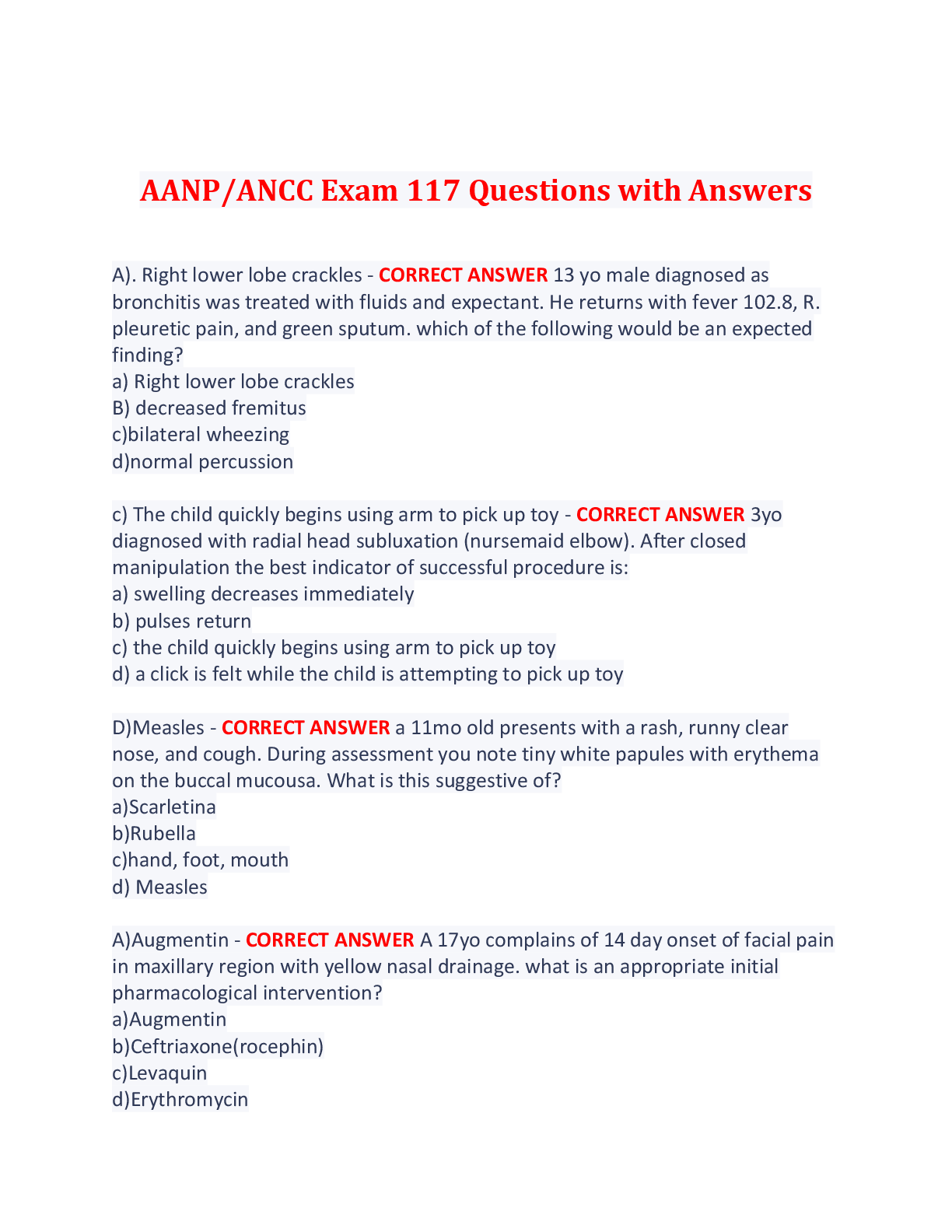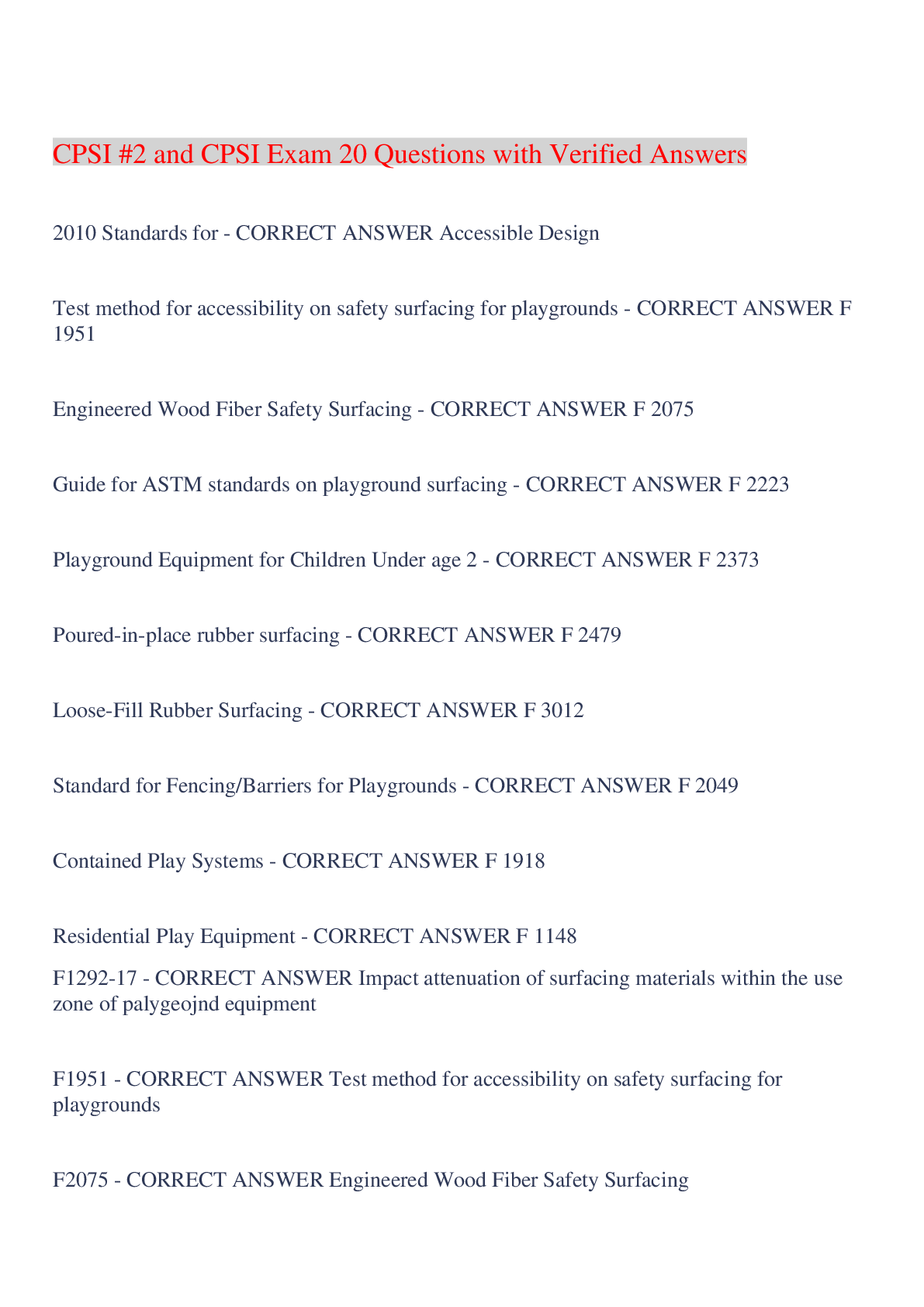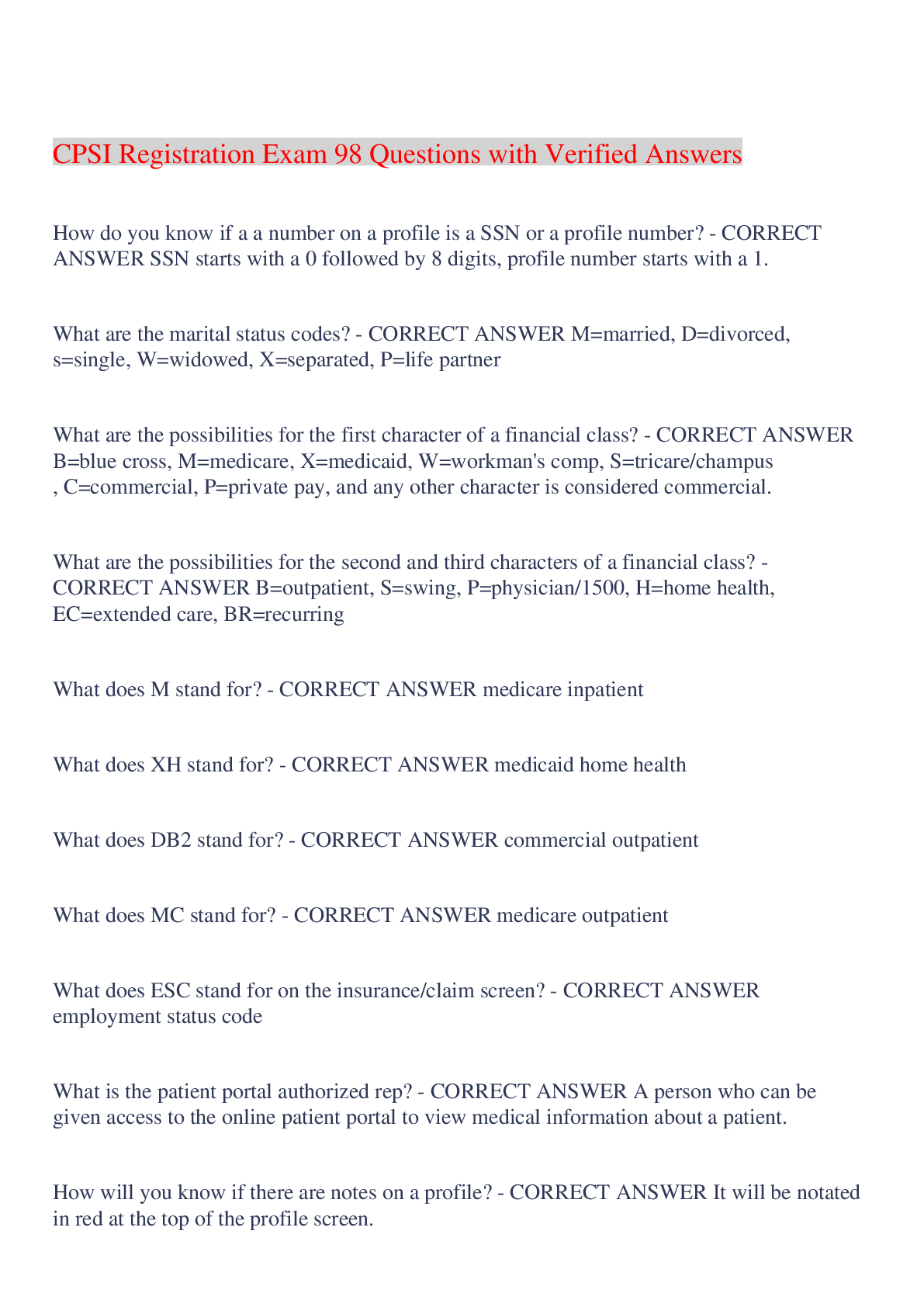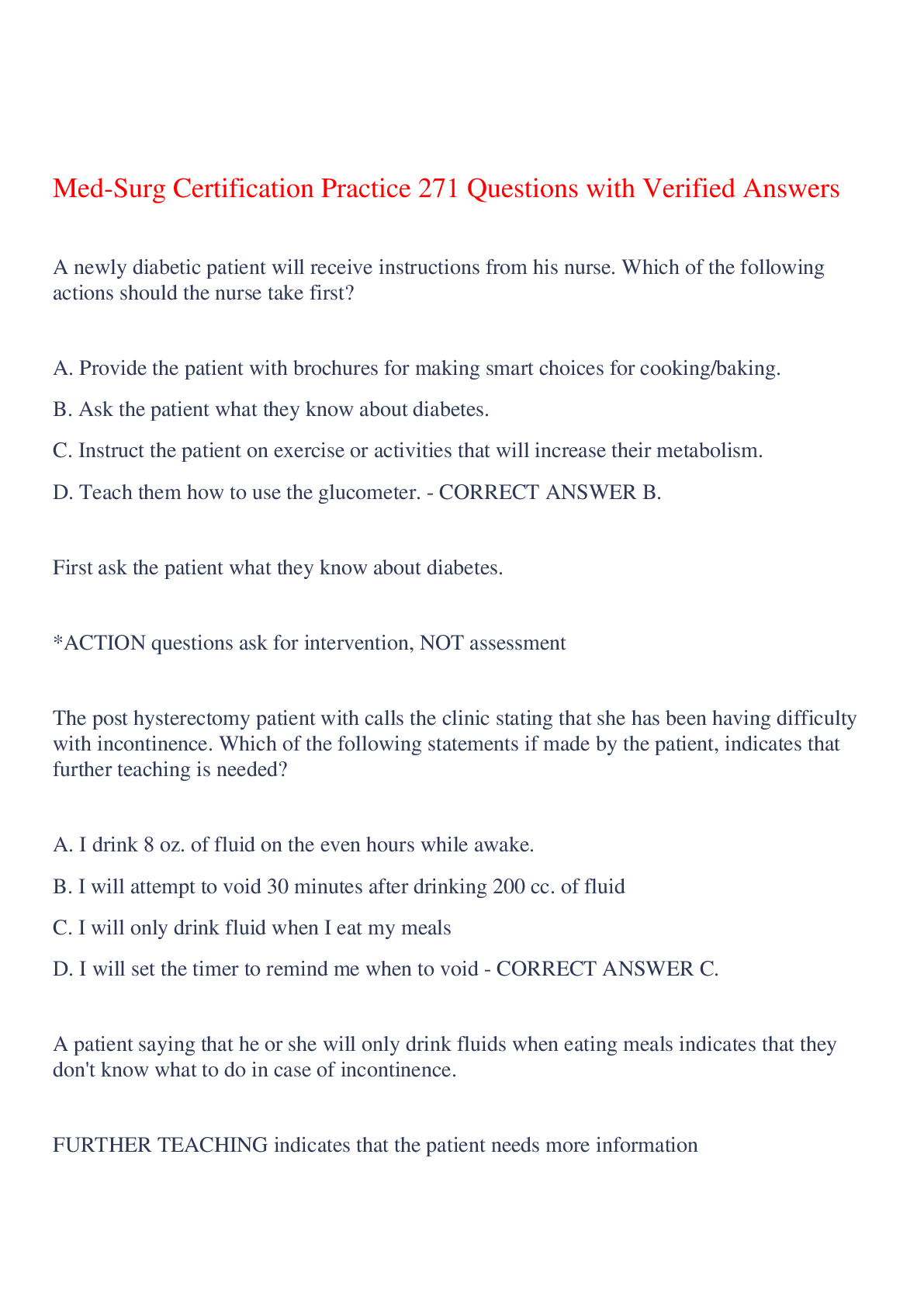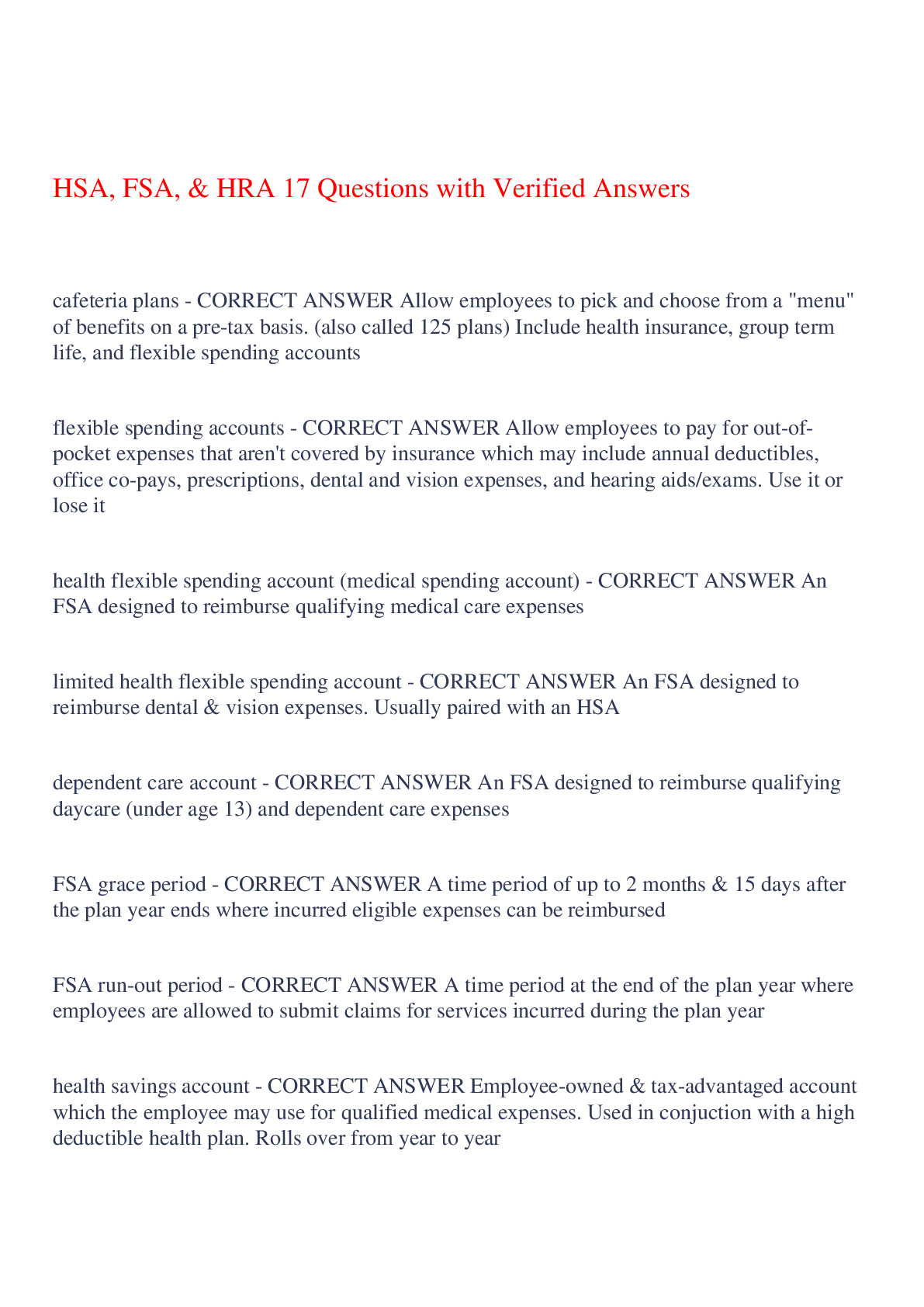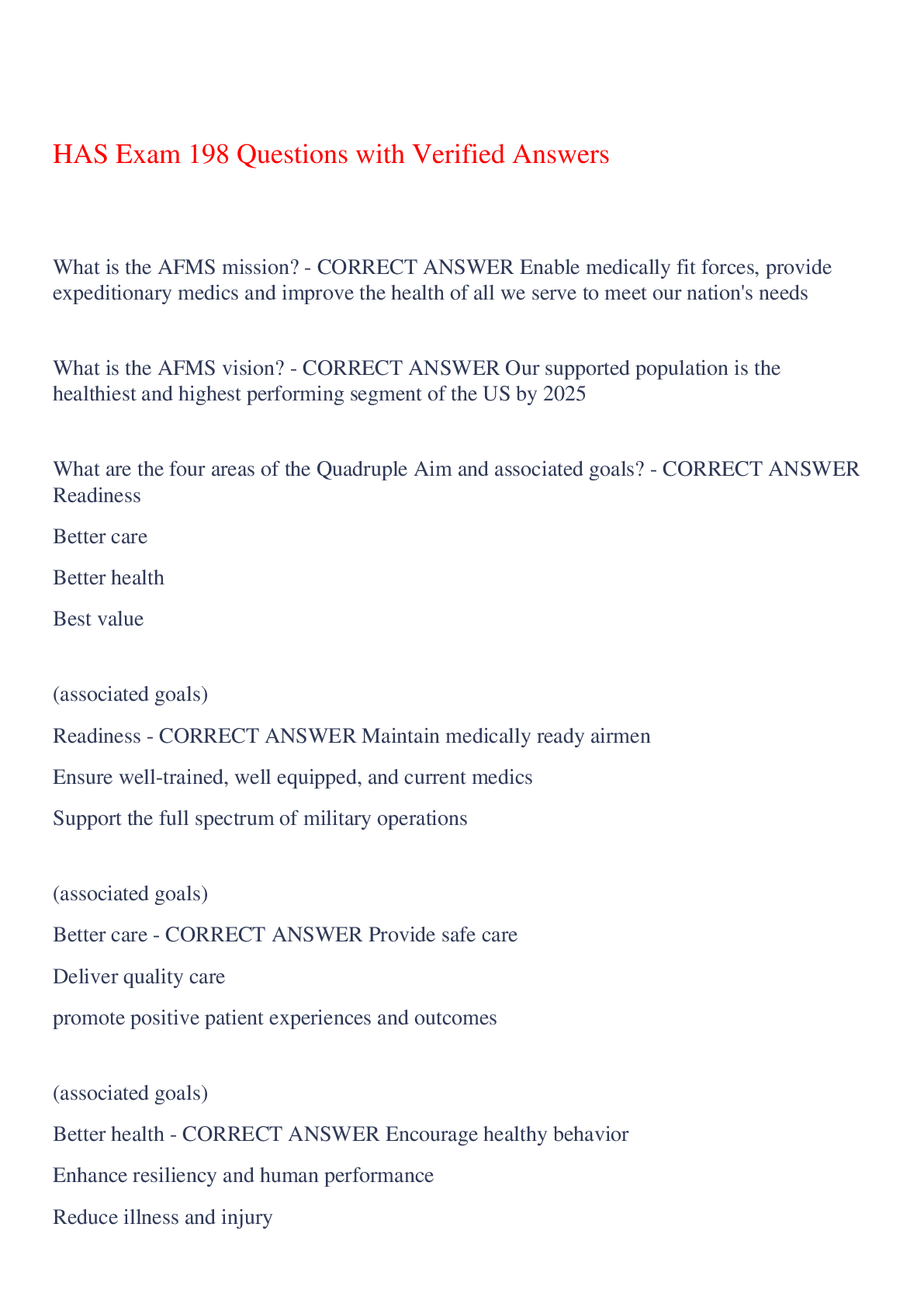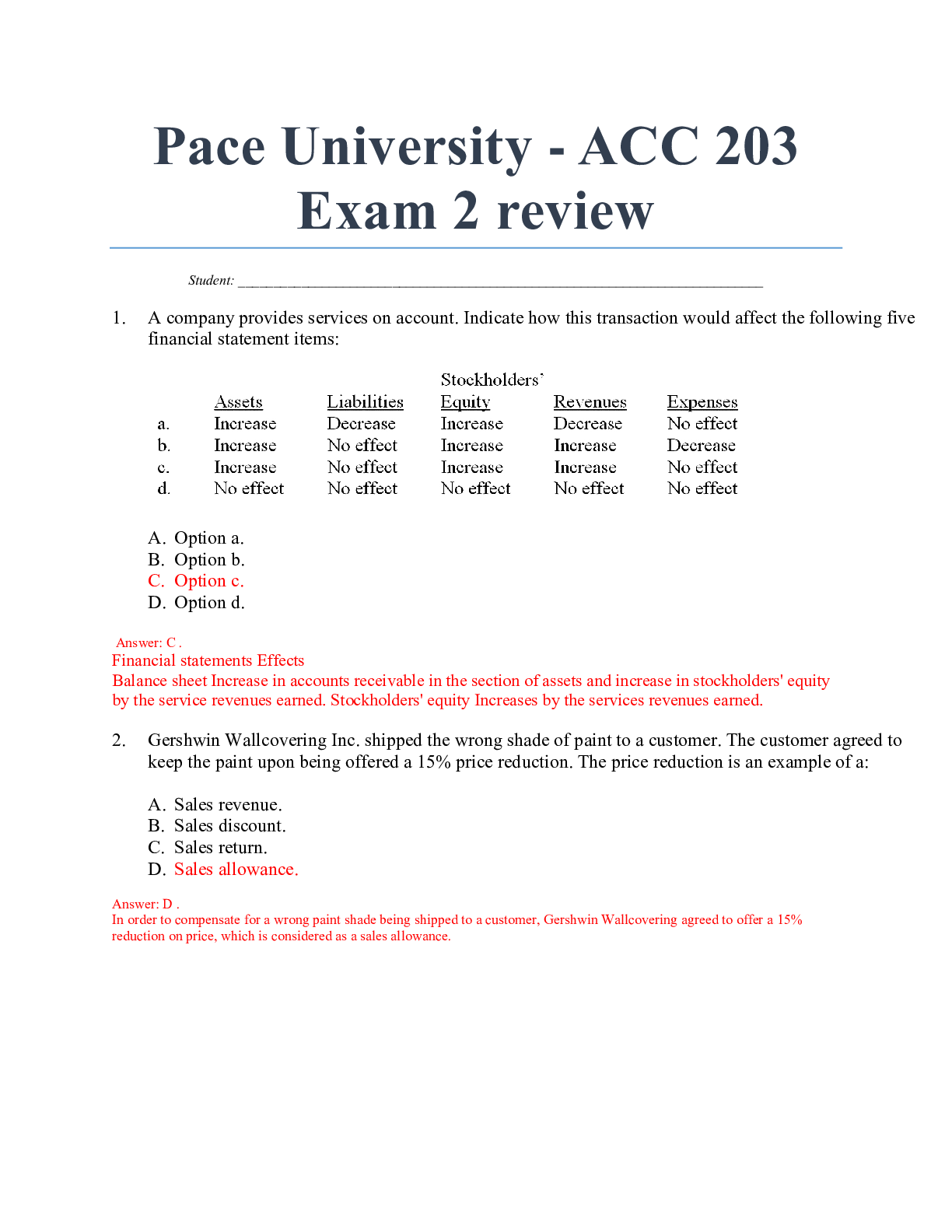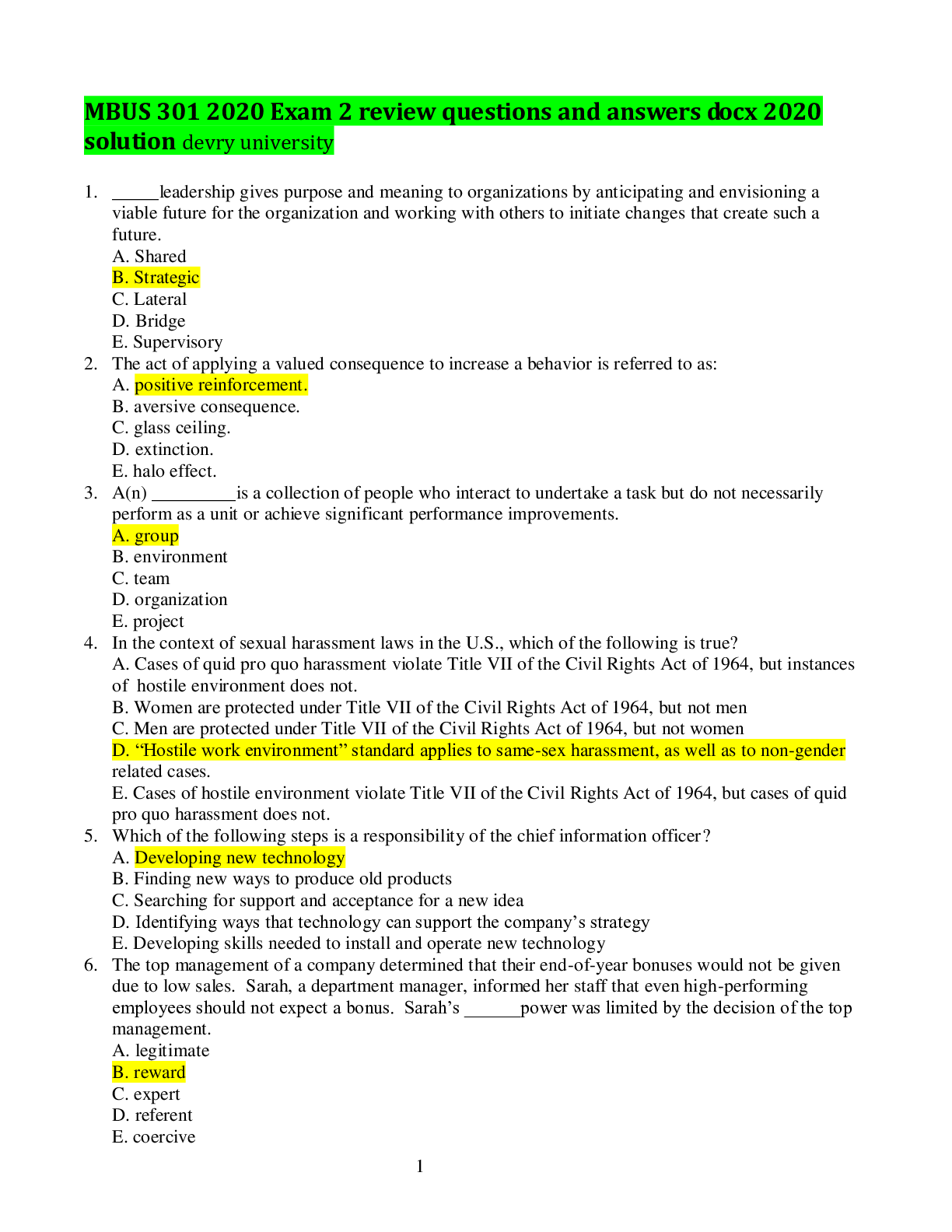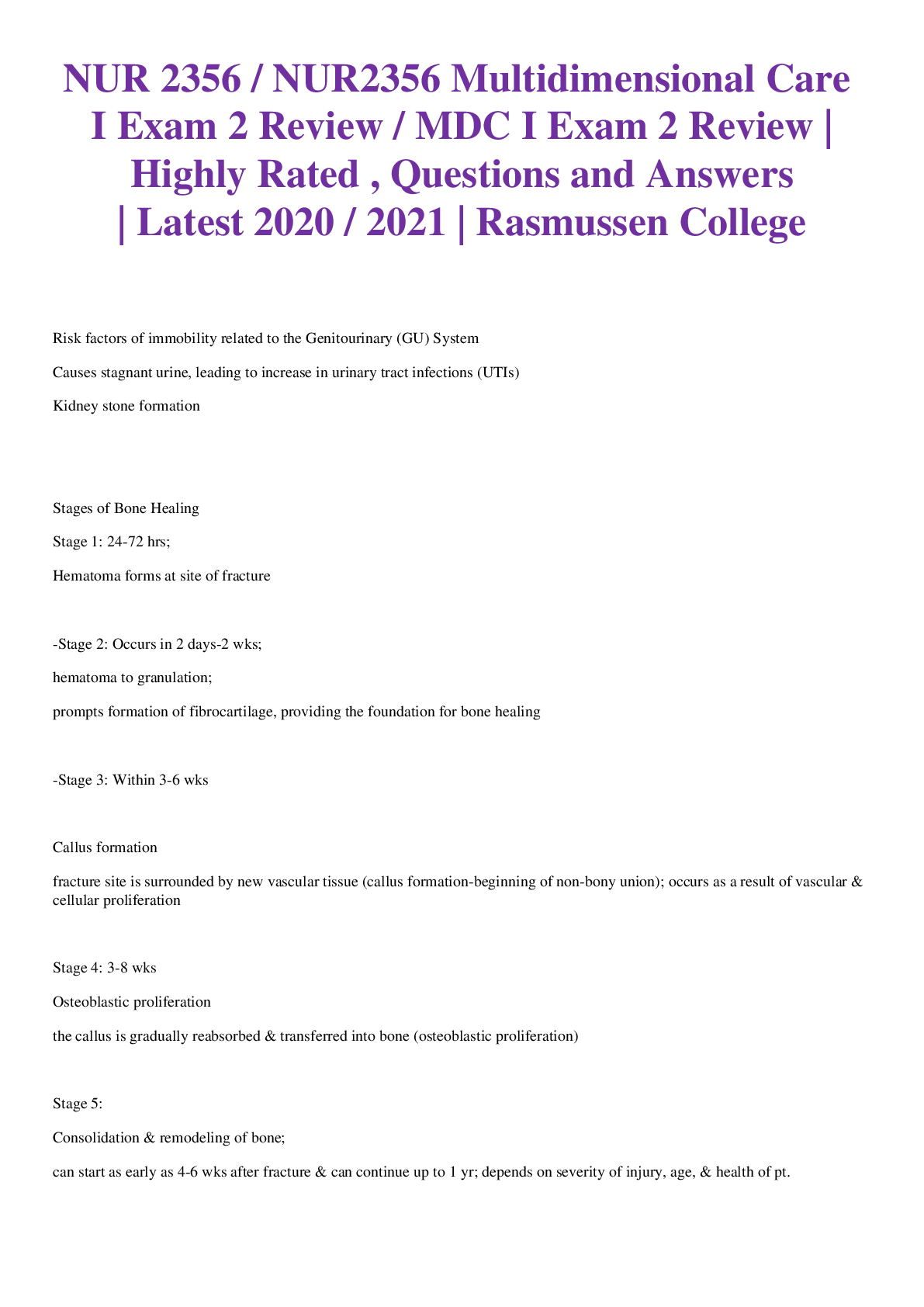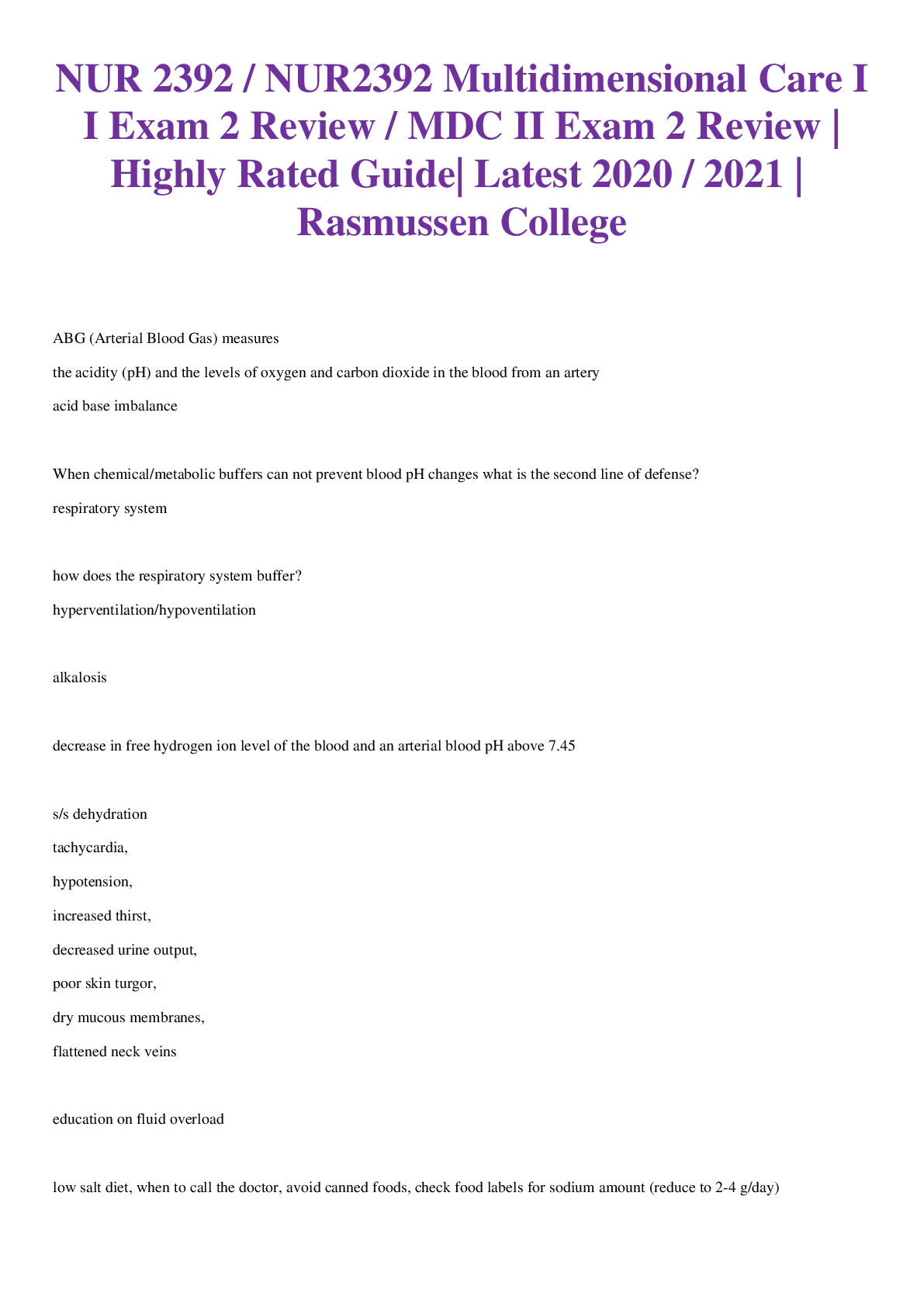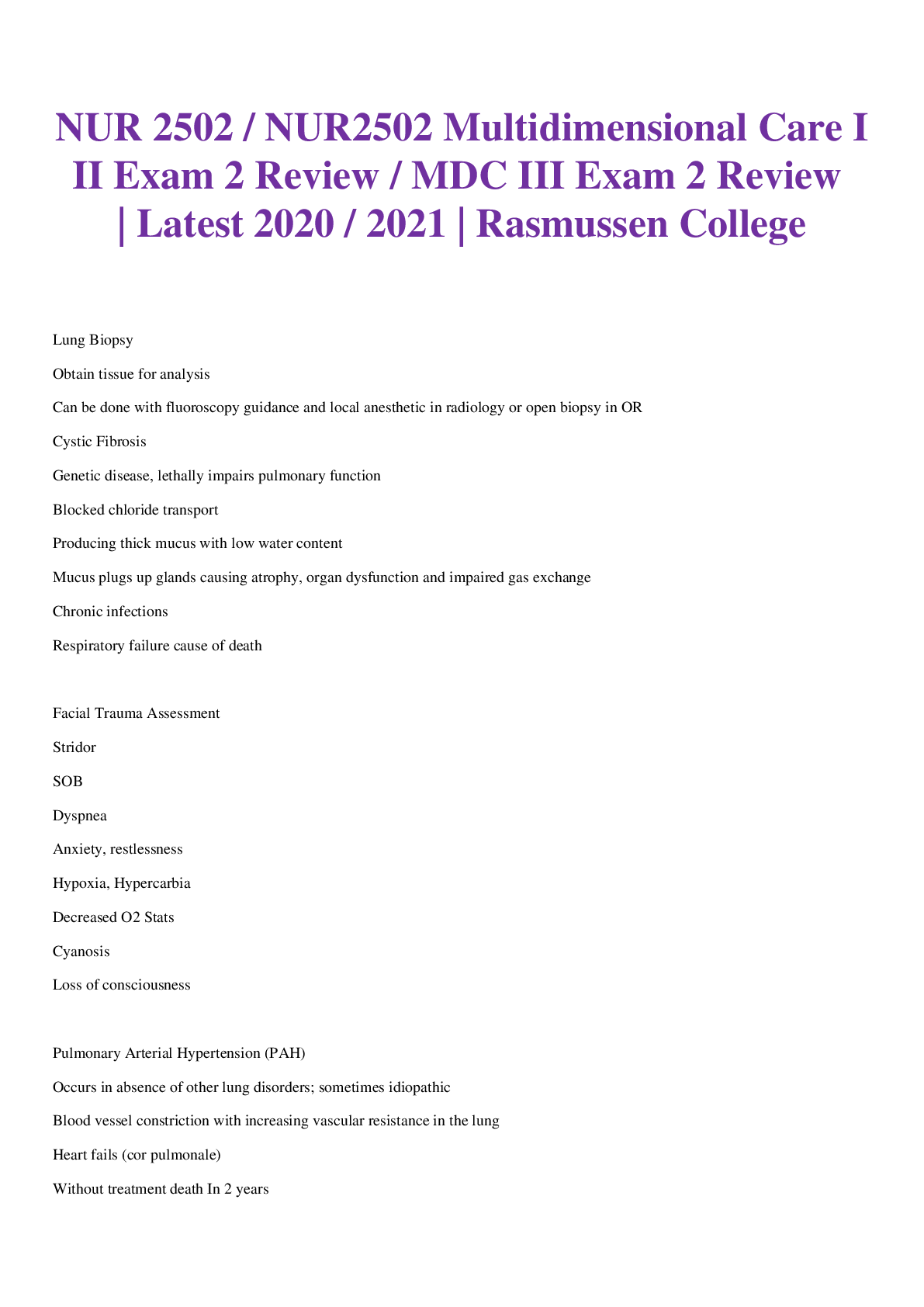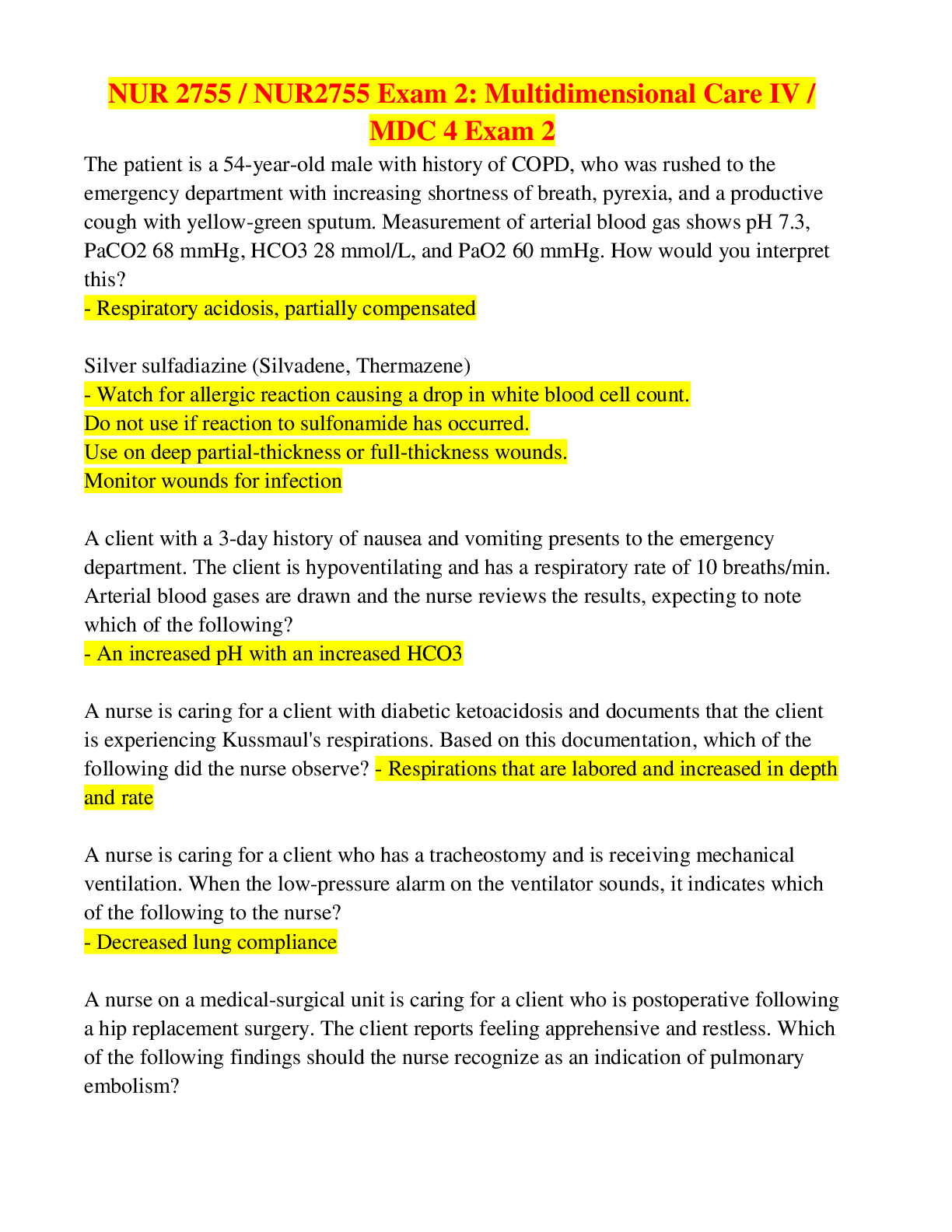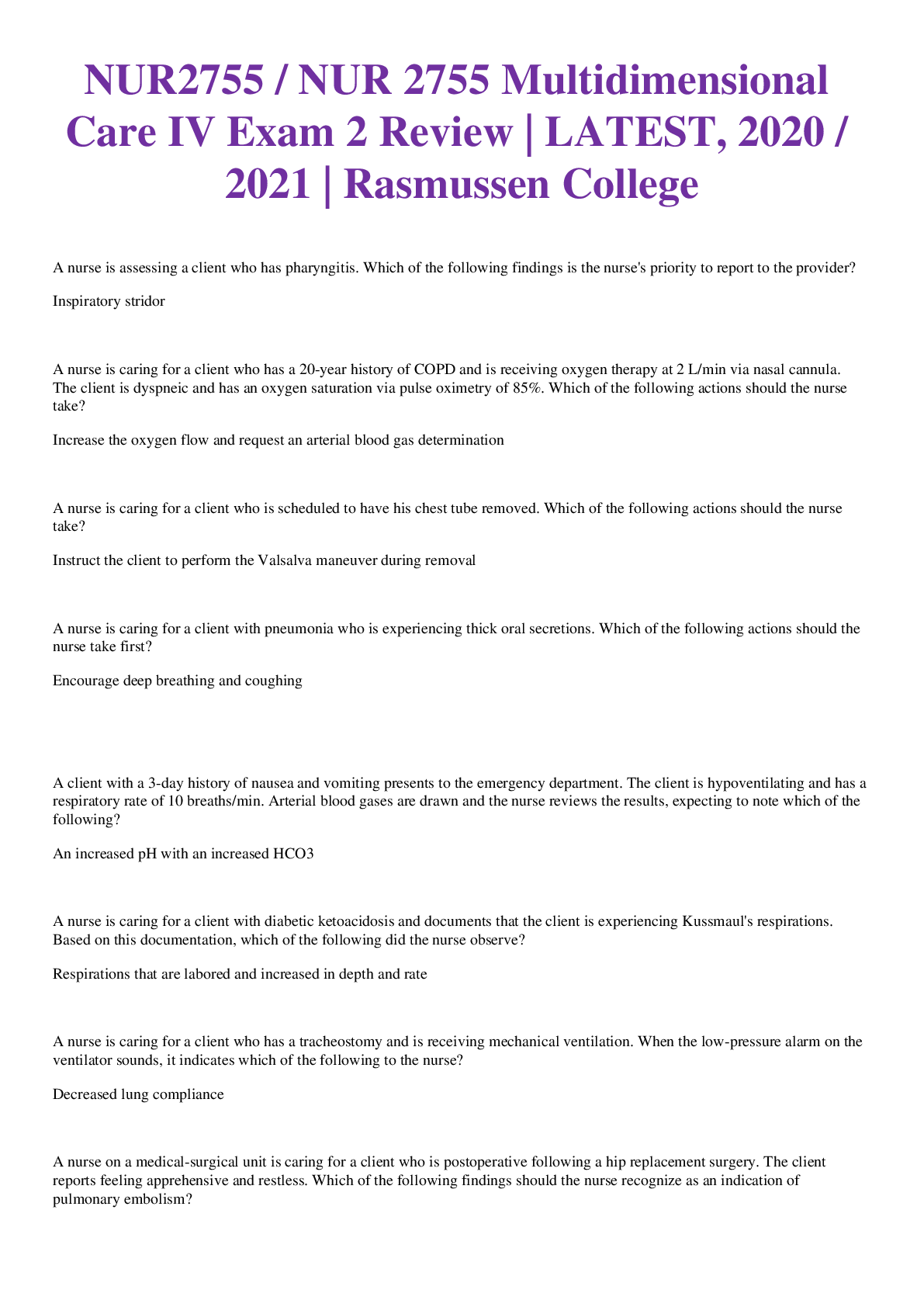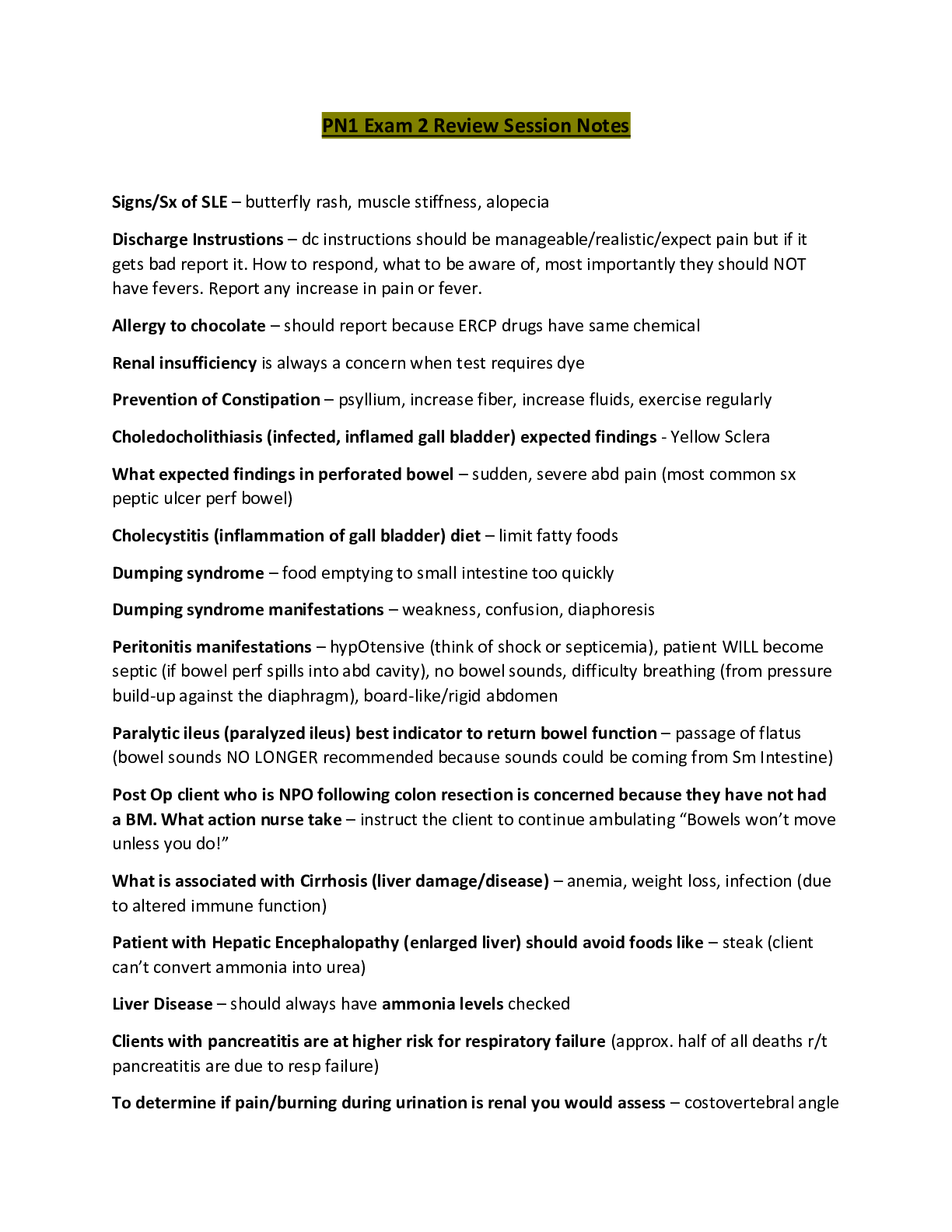CHEM 102 – Winter 18 Exam 2 Review Practice Problems,100% CORRECT
Document Content and Description Below
CHEM 102 – Winter 18 Exam 2 Review Practice Problems 1) Which substance in the reaction below either appears or disappears the slowest? C2H4(g) + 3 O2(g) ? 2 CO2(g) + 2 H2O A) C2H4 B) O2 C) CO... 2 D) H2O E) The rates of appearance and disappearance are the same for all of these. 2) In the reaction 2A + B → 2C + D, -Δ[A]/Δt is found to be 5.0 M ∙ min−1. What is the rate of reaction of B? A) 2.5 B) 5.0 C) 10 D) 75 E) Additional information is required. 3) For a first-order reaction, the rate constant, k, could have the following units. A) min B) min−1 C) mol L−1 min−1 D) min mol L−1 E) L mol−1 4) The decomposition of nitrogen dioxide to nitrogen and oxygen is second order with a rate constant, k = 12.5 M−1 s−1. What is the half-life for the reaction if [NO2]0 = 0.00260 M? A) 10.6 s B) 22.8 s C) 30.8 s D) 42.4 s E) 68.4 s 5) The half-life of cesium-130 is 30 minutes. What percentage of the initial activity will be present after 2.0 hours, assuming radioactive decay occurs by a first order rate mechanism? A) 50 B) 25 C) 12.5 D) 6.25 E) 3.13 6) What is the rate law for the reaction of hydrogen gas and chlorine gas to form HCl? A) rate = k [H2] [Cl2] B) rate = k [H2] C) rate = k [H2]2 [Cl2] 2 D) rate = k [H] [Cl] E) The rate law cannot be determined without experimentation. 7) What is the rate constant for a zero order reaction whose rate = 0.210 M s-1 and [A] = 0.400 M? A) 0.525 s-1 B) 0.210 M s-1 C) 0.0840 M s-1 D) 1.90 s-1 E) 1.05 M-1 s-1 8) The rate law for the following reaction A + B C is: rate = k [A][B]2 Which one of the following statements is false? A) The reaction is first order in A. B) The reaction is second order in B. C) The reaction is second order overall. D) k is independent of concentration E) If [B] is doubled, the reaction rate will increase by a factor of 4. 9) The initial concentration of reactant in a first-order reaction is 0.27 M. The rate constant for the reaction is 0.75 s-1. What is the concentration (mol/L) of reactant after 1.5 s? A) 3.8 B) 1.7 C) 8.8 × 10-2 D) 2.0 × 10-2 E) 0.135 10) What is the correct rate law for the reaction described in the table below? Experiment [NO] (10-2 M) [O2] (10-2 M) Rate (10-3 M s-1) A 1 1 7 B 2 1 28 C 1 2 14 A) rate = k [NO] [O2] B) rate = k [NO]2 [O2] C) rate = k [NO] [O2]2 D) rate = k [NO]2 [O2]2 E) need more information 11) For second-order reactions the slope of a plot of 1/[A] vs. time is A) k. B) -k. C) kt. D) k/t. E) k / [A]0. 12) In general, as temperature goes up, reaction rate A) goes up if the reaction is exothermic. B) goes up if the reaction is endothermic. C) goes up regardless of whether the reaction is exothermic or endothermic. D) stays the same regardless of whether the reaction is exothermic or endothermic. E) stays the same if the reaction is first order. 13) Which is not usually a factor in determining the rate of a reaction? A) orientation of the molecules that collide B) kinetic energy of the molecules that collide C) the temperature of the reaction mixture D) the surface contact area of the molecules that collide E) the stability of the product 14) Which statement is not correct regarding the function of a catalyst? A) It lowers the activation energy. B) It changes the mechanism of a reaction. C) It affects the rate of a chemical reaction. D) It lowers the energy of the product causing the reaction to be more exothermic. E) None of the above are incorrect. 15) Consider the reaction profile shown. The activation energy of the reverse reaction is represented by the difference in energy between points A) A and D. B) A and C. C) B and C. D) A and B. E) B and D. 16) The value of Kc is changed when A) the concentration of reactants are changed. B) the volume of the system is changed. C) the pressure of the system is changed. D) the temperature of the system is changed. E) a catalyst is added. 17) What is the equilibrium constant if [A] = 0.19M, [B] = 0.952M, and [C] = 0.70M? 2A ⮀ 2B + C A) 18 B) 3.3 C) 3.5 D) 7.0 E) 0.057 18) At 1000 K, the equilibrium constant for the reaction 2NO (g) + Br2 (g) ⮀ 2NOBr (g) is Kp = 0.013. Calculate Kp for the reverse reaction, 4NOBr (g) ⮀ 4NO (g) + 2Br2 (g). A) 0.013 B) – 1.6 × 10-4 C) 5.9 × 103 D) 77 E) 8.8 19) The equilibrium constant for the gas phase reaction N2 (g) + 3H2 (g) ⮀ 2NH3 (g) is Kc = 4.34 × 10-3 at 300 °C. At equilibrium, A) products predominate. B) reactants predominate. C) roughly equal amounts of products and reactants are present. D) only products are present. E) only reactants are present. 20) For the equilibrium shown below at 298K, Kp = 6.92. At equilibrium, a 10.0L flask contains 3.70 moles of A and a partial pressure of C of 0.290 atm. What is the partial pressure of B? A (s) + B (g) ⮀ 2 C (g) A) 0.0122 B) 0.0419 C) 0.00328 D) 0.0838 E) 0.0210 Answers: 1) A 2) A 3) B 4) C 5) D 6) E 7) B 8) C 9) C 10) B 11) A 12) C 13) E 14) D 15) E 16) D 17) A 18) C 19) B 20) A [Show More]
Last updated: 2 years ago
Preview 1 out of 6 pages

Buy this document to get the full access instantly
Instant Download Access after purchase
Buy NowInstant download
We Accept:

Reviews( 0 )
$13.00
Can't find what you want? Try our AI powered Search
Document information
Connected school, study & course
About the document
Uploaded On
Mar 06, 2023
Number of pages
6
Written in
Additional information
This document has been written for:
Uploaded
Mar 06, 2023
Downloads
0
Views
62


